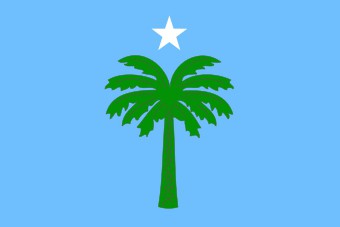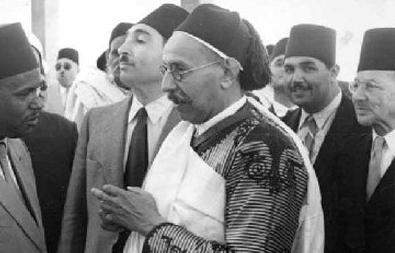The state symbols of Libya after the overthrow of the leader of the Jamahiriya Muammar Gaddafi has not changed. Obviously, rebel groups and PNS leaders are not up to this right now. We have to do with what we inherited from the crushed authoritarian regime.
The heraldry of this state arose in 1951, when the kingdom of Libya appeared on world maps. The emblem and flag, which serve as the symbols of the country today, were approved in 1977, eight years after the military coup, also called the September Revolution, as a result of which Gaddafi became the national leader. Many events have passed between these two dates. For twenty-six years, the flag of Libya has changed four times. The reasons were different.
Colonialists and flags
360 years on most of this Arab state was Tripolitania.
In 1911, the Turkish ownership of this land, or rather mostly desert, ended. The country did not find freedom, but the colonizer changed, an Italian tricolor, green-white-red, with a royal cross on a red background in the center, roared over Tripoli. After World War I, Tripolitania seemed to have gained sovereignty. For five years, the former Italian colony attempted to gain international recognition under the blue flag with a green palm and a white star, but in 1923 the fascist dictator Benito Mussolini, who dreamed of creating a great empire, again sent troops here. The invaders acted brutally, using barbaric methods of war, including poisonous gases, not to mention air bombs. Italians, seeking to expand their influence in North Africa, joined other emirates to Tripolitania, covering almost the entire territory of modern Libya.

During World War II (1942), the Italian flag gave way to the British Union Jack; it flew over part of the land taken from Italian colonialists until 1949. At the same time, the province of Fezzan, ruled by France, had another flag on which a white star and a crescent moon were depicted on a red background.
Independence
In 1951, Tripolitania merged with Cyrenaica (which had the same flag, but black) and Fezzan, as a result the Kingdom of Libya was formed. The new monarchy needed a state symbol, such that it took into account the attributes of all three lands included in its composition, and it turned out that way. Three stripes, among which the middle (black) was twice as wide as the extreme (upper - red, lower - green), with a star and a crescent in the center symbolized the primacy of Cyrenaica, blood shed in the struggle, and the dominant religious denomination. It was the first flag of Libya as an independent state.
Flags under Gaddafi
The country achieved real sovereignty only after Muammar Gaddafi came to power. In 1969, the symbol of the country adopted pan-Arab red-white-black colors. After joining the Federation of Arab Republics (1972), an eagle of golden yellow color was added to the stripes, which clutches a scroll with the name of an interstate association in its claws. This was the flag of Libya after 1972. In addition to it, the headlights included Syria and Egypt.
Last flag
The traditional color of Tripolitania was green. The reason for the change of flag in 1977 was politically motivated, which can only be understood by returning to the distant 1951, when the country received independence from Great Britain at the request of the UN General Assembly. The state structure of the new subject of international law was defined as a federal constitutional monarchy, and Sheikh Idris the First became its head, it was with him that the first flag of Libya was adopted. Photos of the king, surrounded by British officers and Sensuit leaders, testified to his desire to increase the importance of Cyrenaica, although the population of this province was less than a third of all citizens of the country. Such a policy caused discontent among the population, therefore, after the overthrow of the monarchy, the flag of the Federation of the Arab Republics was adopted as the state. In 1977, it ceased to exist.

The flag of Libya is unique, it is solid green. There are no other monochrome state symbols in the world.
As long as a civil war is fought in the former Great Socialist People’s Libyan Jamahiriya, it’s hard to imagine what the country's political and economic prospects are, and even more so what its next flag will be like. Her story is a lesson to other states ...